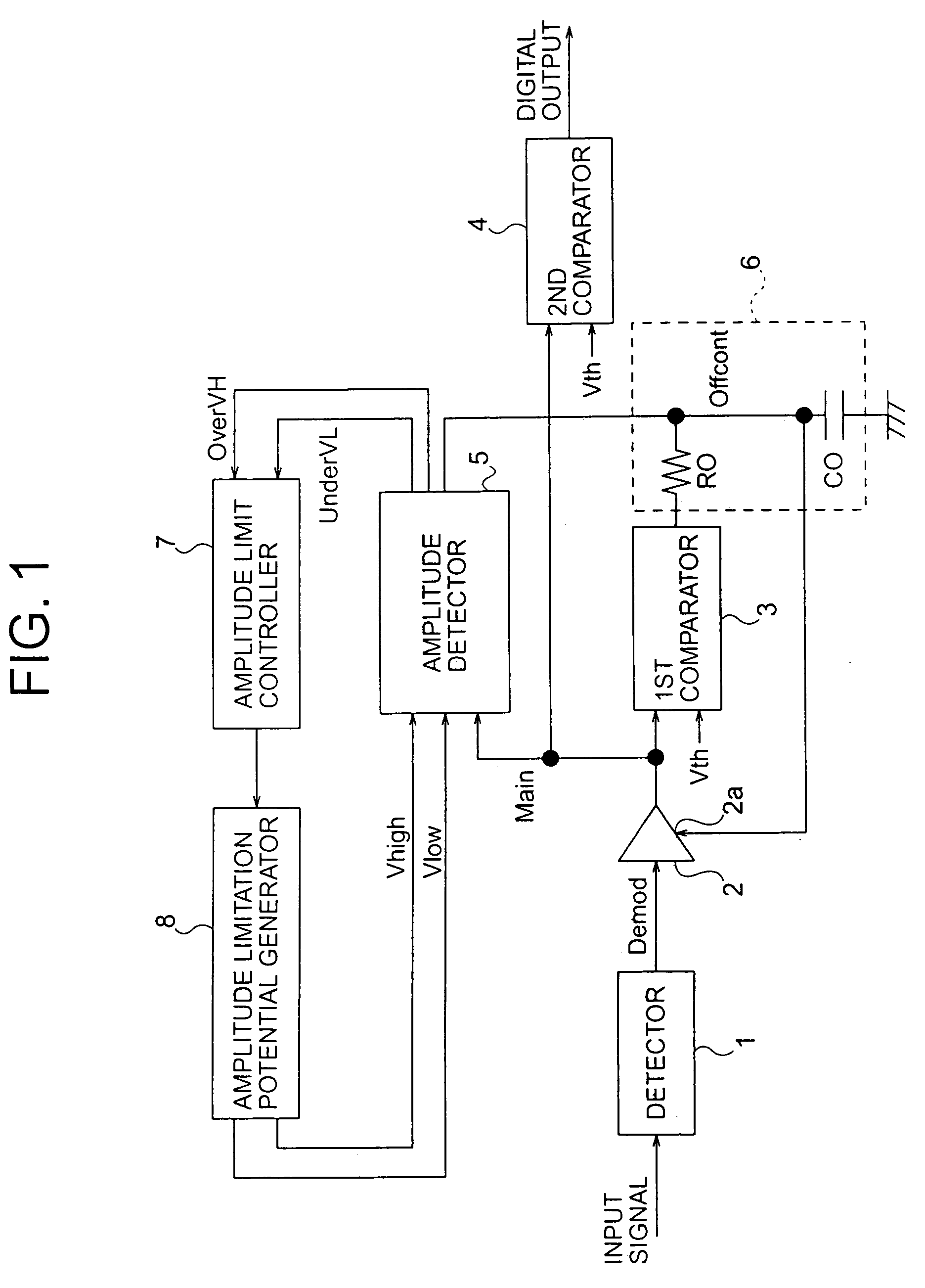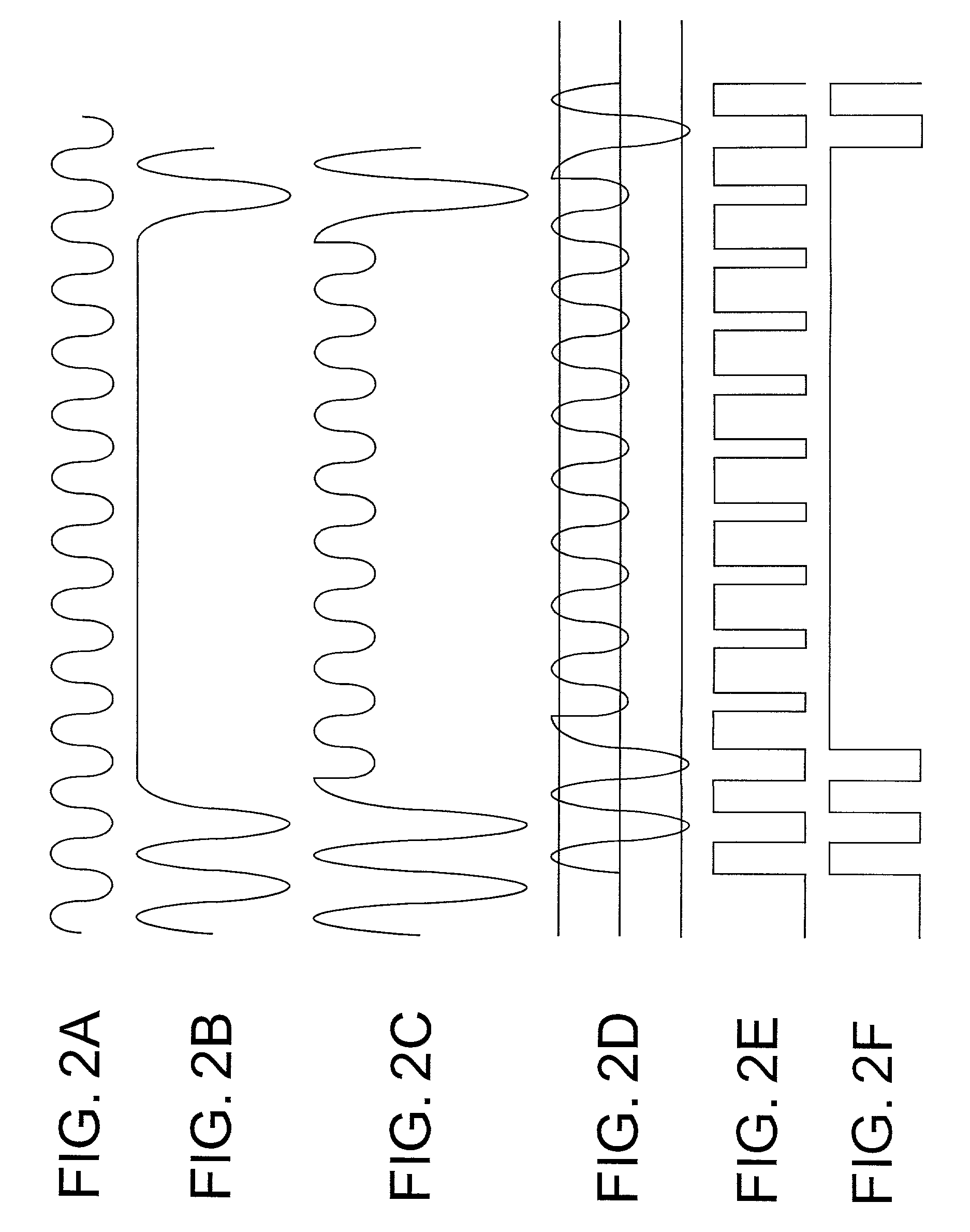Signal compensation circuit and demodulating circuit with high-speed and low-speed feedback loops
a signal compensation circuit and feedback loop technology, applied in the direction of dc level restoring means or bias distorting correction, pulse technique, baseband system details, etc., can solve the problem of reducing the tolerance of run length, the inability to tolerate long run lengths, and the inability to achieve high-speed dc offset compensation
- Summary
- Abstract
- Description
- Claims
- Application Information
AI Technical Summary
Benefits of technology
Problems solved by technology
Method used
Image
Examples
Embodiment Construction
[0038]An embodiment of the invention will be described with reference to the attached drawings.
[0039]Referring to FIG. 1, the demodulating circuit in the embodiment includes a detector 1, an amplifier 2, a first comparator 3, a second comparator 4, an amplitude detector 5, an integrating circuit 6, an amplitude limit controller 7, and an amplitude limitation potential generator 8. The integrating circuit 6 includes a resistor RO and a capacitor CO. The amplifier 2, first comparator 3, amplitude detector 5, resistor RO, capacitor CO, amplitude limit controller 7, and amplitude limitation potential generator 8 constitute a signal compensation circuit embodying the invention.
[0040]The detector 1 demodulates an input signal (an FSK signal, for example), and outputs the demodulated signal (the detected signal) as an analog signal to the amplifier 2.
[0041]The amplifier 2 amplifies the demodulated analog signal to an amplitude level adequate for operation of the comparators 3 and 4, and ou...
PUM
 Login to View More
Login to View More Abstract
Description
Claims
Application Information
 Login to View More
Login to View More - R&D
- Intellectual Property
- Life Sciences
- Materials
- Tech Scout
- Unparalleled Data Quality
- Higher Quality Content
- 60% Fewer Hallucinations
Browse by: Latest US Patents, China's latest patents, Technical Efficacy Thesaurus, Application Domain, Technology Topic, Popular Technical Reports.
© 2025 PatSnap. All rights reserved.Legal|Privacy policy|Modern Slavery Act Transparency Statement|Sitemap|About US| Contact US: help@patsnap.com



